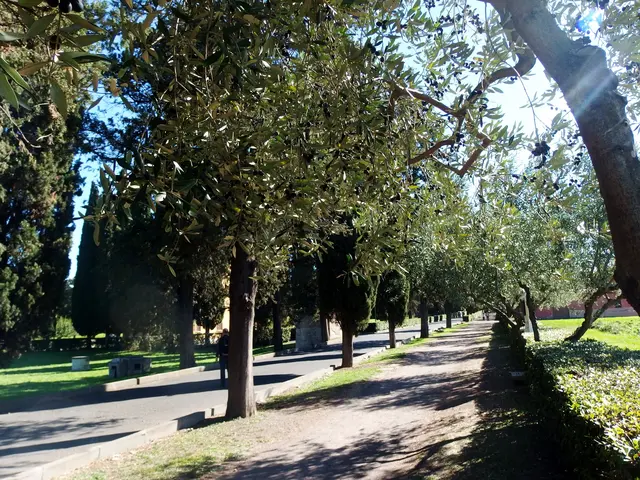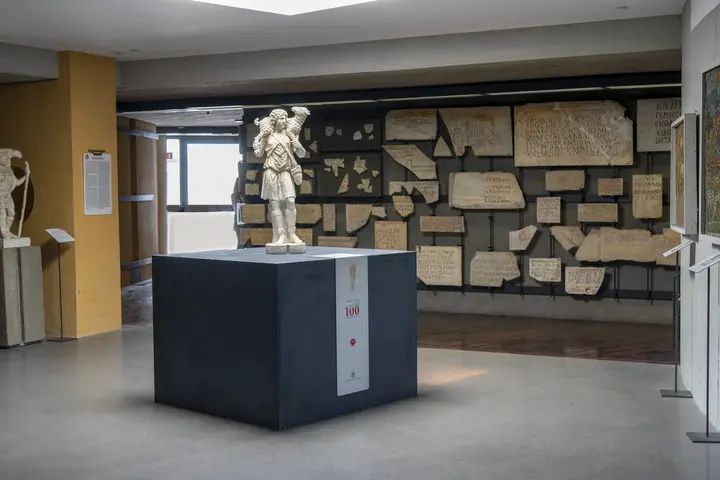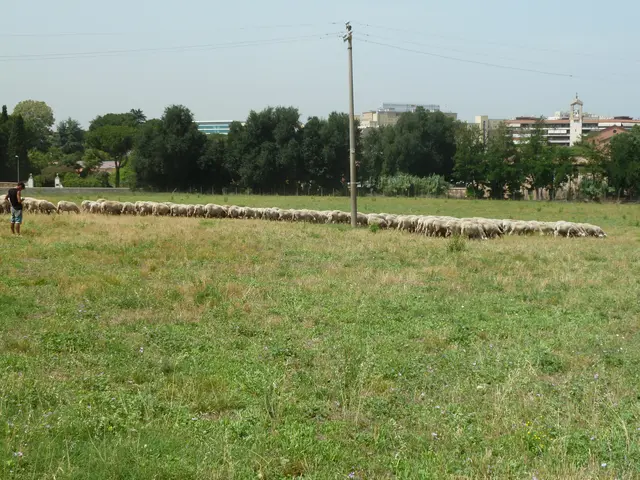Catacombe di San Callisto
Introduction
The Catacombe di San Callisto introduce us to an extraordinary world beneath Rome's streets. These catacombs, created in the 2nd century, became the beating heart of early Christian burial, prayer, and identity. With passageways stretching for miles, San Callisto welcomes cultural explorers, teachers, and history lovers to experience the city’s hidden past—one where art, memory, and tradition intertwine underground.
Historic Highlights
🕯️ An Underground Community
The Catacombe di San Callisto began as a small burial vault on the Appian Way in the 2nd century. By the early 3rd century, under the guidance of Pope Zephyrinus and his deacon Callixtus, it expanded into the official cemetery for Roman Christians. This Roman monument grew into a vast network, with galleries of loculi (simple burial niches) for everyday believers and select cubicula (decorated rooms) for wealthier families.
“The catacombs expanded like colonies of ants through the earth, with narrow galleries stacked with simple loculi.”
— Baruffa, Le catacombe di San Callisto
🎨 The Crypt of the Popes and Martyrs
San Callisto houses the famed Crypt of the Popes—sometimes called “the little Vatican” by 19th-century explorers—where sixteen bishops of Rome, including martyrs, were interred. Inscriptions on tombs, mostly in Greek, reflect the community’s roots and struggles. The catacombs also became a pilgrimage site as Christians gathered to honor saints like St. Cecilia.
“I realized I stood at the threshold of a ‘Little Vatican’ of the persecuted Church.”
— Giovanni Battista de Rossi
🛠️ Loss, Rediscovery, and Preservation
After the 9th century, San Callisto was abandoned: relics of saints were moved for safety during invasions, and entrances vanished under landslides. For centuries, its location was lost. That changed in 1854, when Giovanni Battista de Rossi used a fragmentary inscription to unlock its secrets, reigniting global interest and launching the field of Christian archaeology.
🌱 Modern Guardianship
Since 1930, the site has been cared for by the Salesians, with conservation ongoing. Restoration of St. Cecilia’s frescoes—involving lasers and scientific care—was completed in 2024. Today, the Catacombe di San Callisto stands as a preserved Roman heritage site, open for reflective visits and educational journeys beneath the city.
💡 Visitor Tip
For a memorable experience, visit early or join a candlelit evening tour. Pair your trip with a stroll along the Appian Way to sense Rome’s ancient rhythms above and below ground.
Timeline & Context
Historical Timeline
- Mid-2nd century AD – Catacombe di San Callisto founded along the Appian Way as private Christian burial vaults expand.
- 199–217 AD – Callixtus, as deacon, administrates and organizes the cemetery, making it the Church of Rome’s official burial ground.
- 3rd–4th centuries – Development of multiple regions, burial of martyrs and popes, construction of surface basilichette (small memorial churches).
- 313 AD – Edict of Milan legalizes Christianity; catacomb tradition persists alongside new surface churches.
- 366–384 AD – Pope Damasus refurbishes passages, inscriptions, and access for pilgrims.
- 8th–9th centuries – Invasions prompt transfer of relics from the catacombs to city churches; site is gradually abandoned.
- 16th–19th centuries – Rediscovery and documentation by antiquarians and, decisively, by Giovanni Battista de Rossi in 1854.
- 20th–21st centuries – Site conserved by the Salesians and Pontifical Commission; major restorations including the 2024 revitalization of the Crypt of St. Cecilia’s frescoes.
Origins of Communal Christian Burial
The Catacombe di San Callisto are emblematic of a shift in early Christian customs. In their earliest days, Roman Christians had no exclusive burial grounds and relied on private or shared pagan cemeteries. By the second century, community organization and benefaction enabled the Church to acquire distinctive cemetery land on Rome’s periphery, complying with Roman law that forbade burial within city walls. The practice of underground interment in volcanic tufa yielded an ingenious, communal solution—a labyrinth of stacked galleries maximizing limited space. San Callisto’s size and official status underscore the growth, solidarity, and institutional structure of Christianity amid a sometimes hostile imperial environment.
Architectural and Liturgical Innovations
The catacomb’s design—loculi for the majority, frescoed cubicula for select families, grander chambers like the Crypt of the Popes—embodied both social inclusion and the reverence for hierarchy. Artistic decoration, though modest, marked the emergence of Christian iconography: motifs like the Good Shepherd, fish, and biblical scenes, which would influence later church art and architecture. During the 4th century, building memorial basilichette and integrating stairways or light shafts enabled both worship and visitation, forging the catacomb-to-church crypt evolution seen in medieval Italy.
Socio-Cultural and Pilgrimage Role
San Callisto was not merely a burial site but a place of public memory and ritual. Families gathered in its halls for funerary vigils, later joined by pilgrims venerating saints and popes—a phenomenon amplified by poetry, inscriptions, and oral tradition. The veneration of relics, which led to the dramatic removal of bones during times of invasion, reinforced ties between the living and the departed, and later shaped the construction of martyrs’ basilicas throughout Rome.
Abandonment and Rediscovery
The centuries of obscurity following the catacomb’s abandonment ensured much of its structure and artwork survived untouched—though at the cost of neglect and collapse in some areas. Its rediscovery by de Rossi in the 19th century revitalized interest in Christian archaeology and reconnected the Church and scholars with Rome’s subterranean world. This moment was not just an academic feat but a cultural and spiritual homecoming for Romans and the Catholic community worldwide.
Contemporary Significance and Conservation
Today, Catacombe di San Callisto are points of convergence for cultural tourism, education, and spiritual reflection. Their conservation requires balancing open access with the sensitive needs of an ancient underground environment—vigilance against humidity, fungi, and the pressures of visitor numbers. International collaborations ensure continual protection, while digital documentation secures knowledge for future generations. As both a national and ecclesiastical treasure, San Callisto stands as a living archive of memory, identity, and resilience, linking Rome's ancient roots to its present vibrancy.


